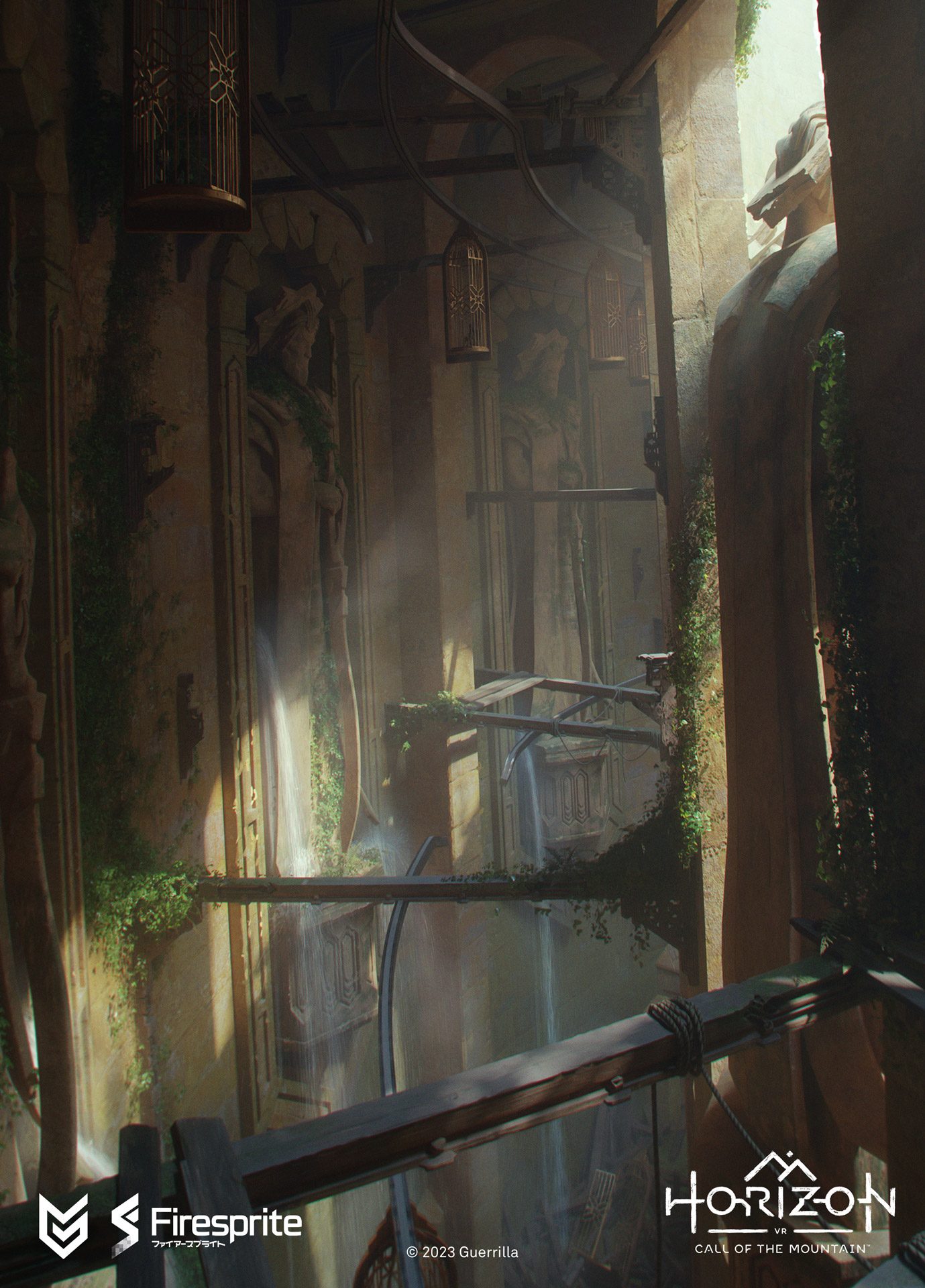For Fun’s Sake
While the core gameplay of climbing, crafting, and combat were on the map from the start, the studios leaned into richer VR interactions after observing how much players were responding to it. That’s how the game ended up with an impressive set of objects to pick up, throw, smash, or just fiddle with—something that really benefited the game’s immersion.
“I think the playfulness of everything really emerged from the team and user testing through development. Players wanted to pick up and touch everything, so we started building out a world where that was not only possible but encouraged. Elements such as the musical instruments got lots of focused love and attention from the team, and it grew from the team playing, and they were a lot of fun to make.”
The developers provided plenty of optional fun in the form of VR interactions that weren’t core to the gameplay but were a joy nonetheless. | View clip
One of the goals of Call of the Mountain was to blow people away with a beautiful virtual world (which game undoubtedly achieves) which is something that just wouldn’t be powerful without a headset that’s backed by something as powerful as PS5. Barnes describes the platform as freeing for the first time, rather than restrictive, when it came to pushing VR visuals.
Call of the Mountain is flush with incredible environmental art, giving players a look at perhaps the best graphics in any VR game to date | View clip
“[The teams] leveraged every bit of expertise and experience they had and worked really closely with the incredible engineers behind the PS VR2 to deliver something that dropped my jaw the first time I saw everything come together. The hardware features like eye-tracking, and the power of the PS5 itself opened a lot of doors that were shut to us on our previous VR titles like The Persistence. We could actually start turning the dial the other way for the first time—where we could add things rather than needing to strip them back all the time.”

The Body Language of Annoyance
Call of the Mountain has tons of impressive details, but there was one aspect that’s state-of-the-art in its own small way: the game’s aptly named ‘flinch and lean’ system which gave NPCs dynamic reactions to player annoyances. This isn’t the first VR game with NPCs that react if you touch them, but the specific details of how this system works—the way the NPCs seem truly annoyed at you—while not interrupting their captured performances, is next-level compared to anything I’ve seen in VR to date.
This doesn’t read quite as well if you aren’t seeing this in the headset for yourself, but the NPC’s body language projects true annoyance when you get in their space… to the point that you might think you should apologize. | View clip
I asked Barnes to talk about this part of the game in detail:
So what we referred to internally as the ‘flinch and lean’ system was one of those beautiful and funny elements that came from seeing what we were trying to do in the scenes and the team wanting to push what was possible in VR. We really didn’t want to take away the players’ ability to have their hands and full control of their camera in as many scenes as possible, so we didn’t have any jarring disconnects. This naturally meant that we had the ability to wave our hands in the characters’ faces and try to boop their noses!
When we saw players doing this as well, we started to think about ways we could make those moments dynamic, so it became a fun moment instead of something that broke immersion when the characters didn’t react. However, we still wanted the dialogue to be delivered as it had been shot, as we wanted to respect our actors’ performances, not detract from them with noticeable additive animations.
So we set the tech animation and animation teams a challenge to see what we could do to make the characters react dynamically, changing their behaviour based upon the players’ actions. It was a balancing act between the intended motion capture performance and natural reactions. It started as basic movements leaning away from an intrusion in the characters’ space, such as when you poke at them, and it developed from there. Layering in natural reactions to these things came next, such as glances at incoming objects, blinking when you turn to look at something and glancing back at the player because they are instigating the action.
Finally, adding an emotional element with facial reactions to the intrusions coupled with natural eye saccades and a dynamic eye-tracking system that allowed the characters to follow the player camera with their eyes. It was an incredible process that involved lots of research, reference, feedback and some incredibly talented teams to develop something truly innovative.
